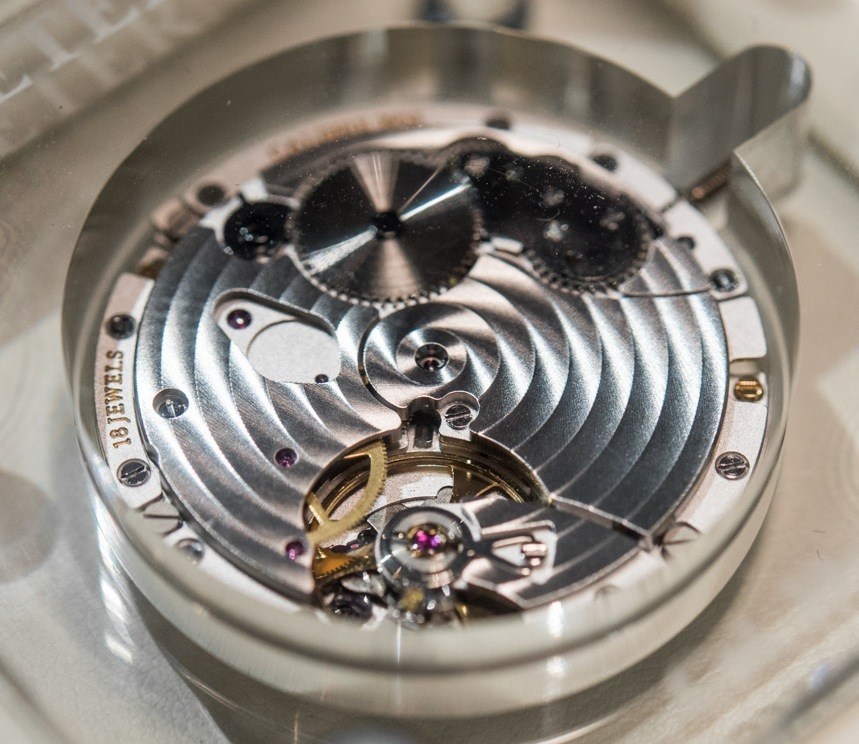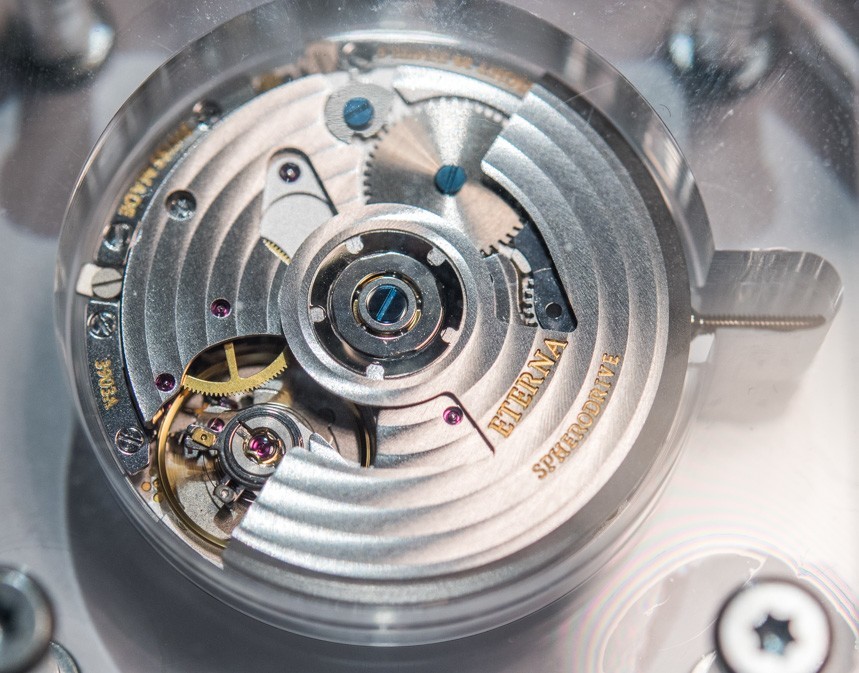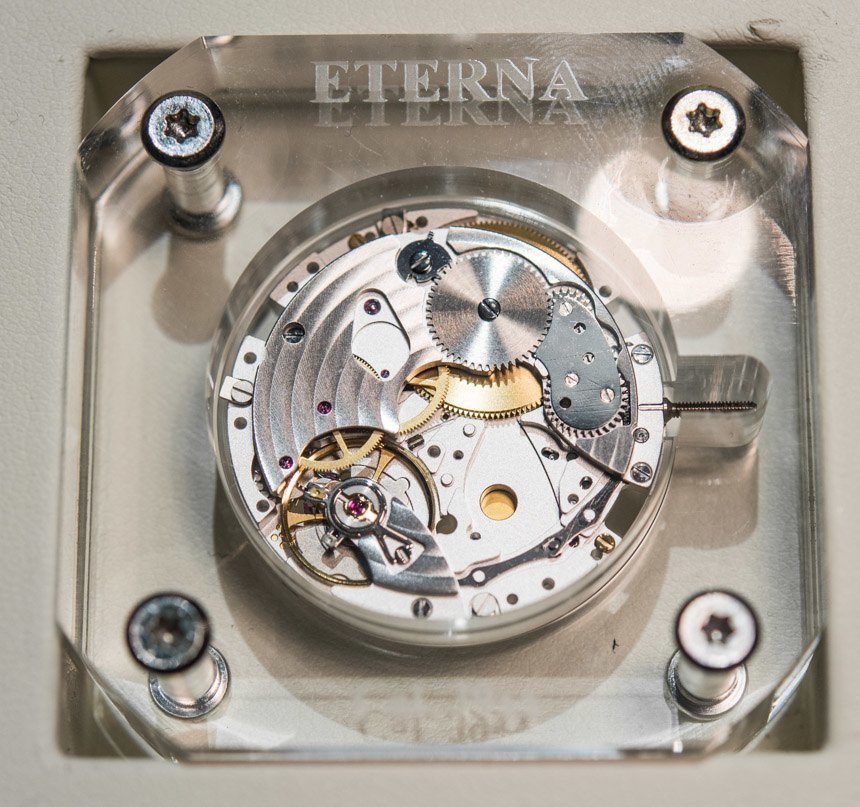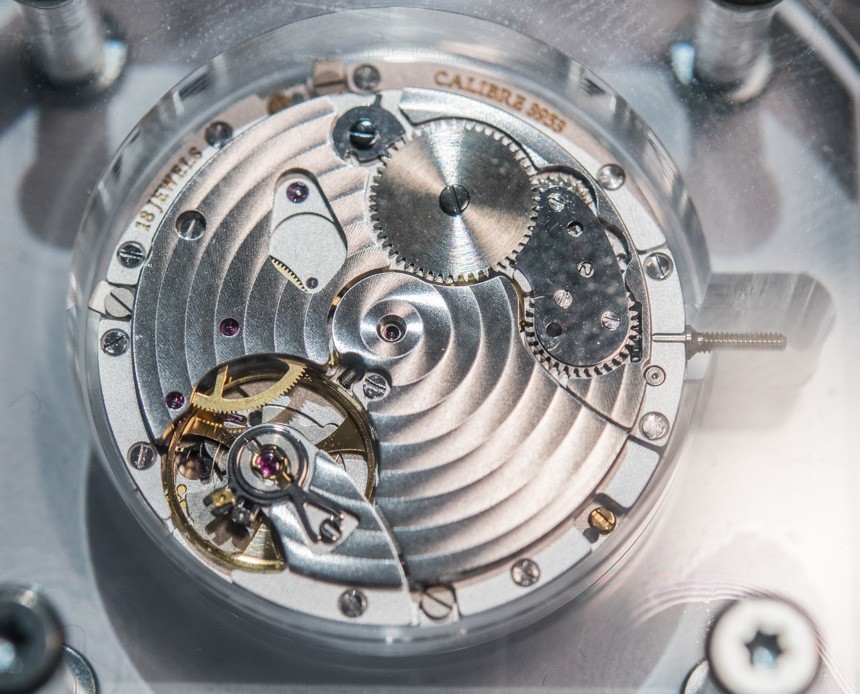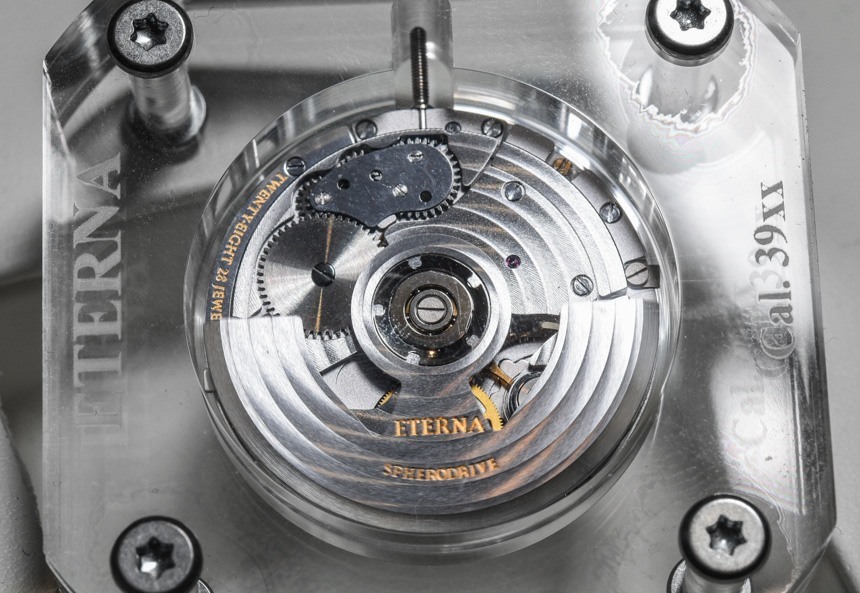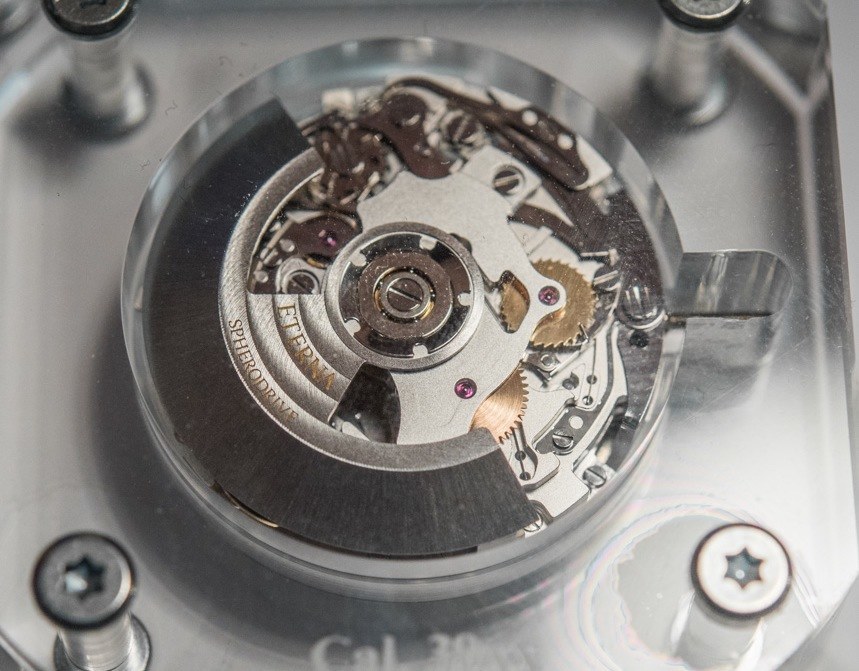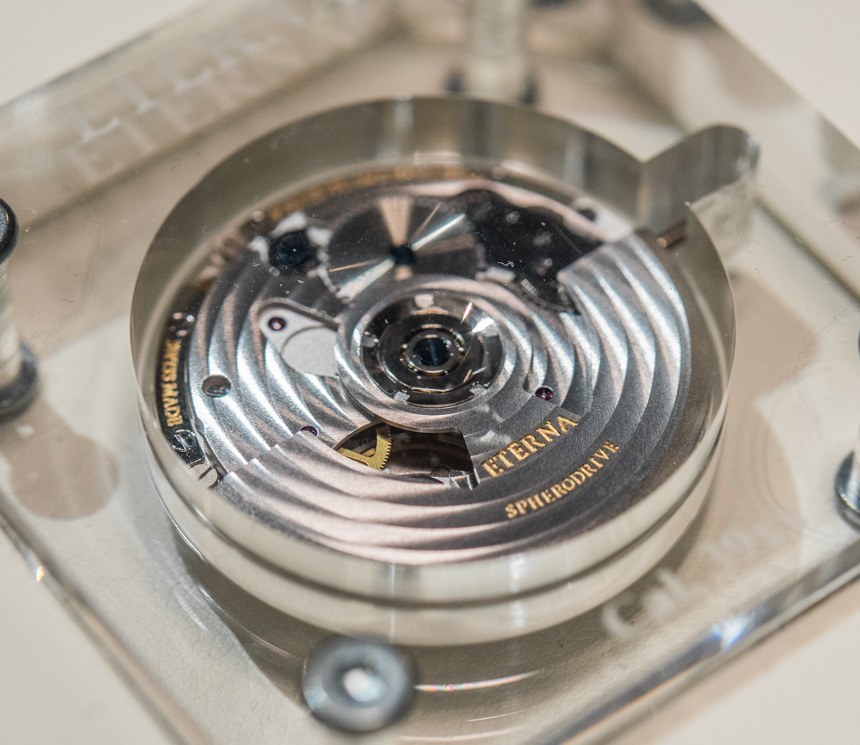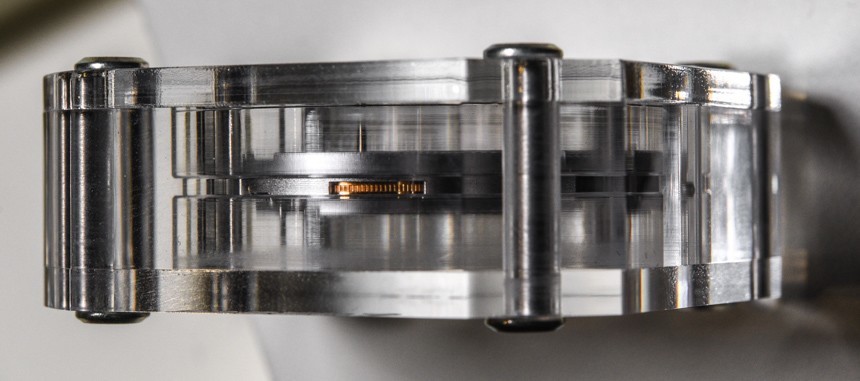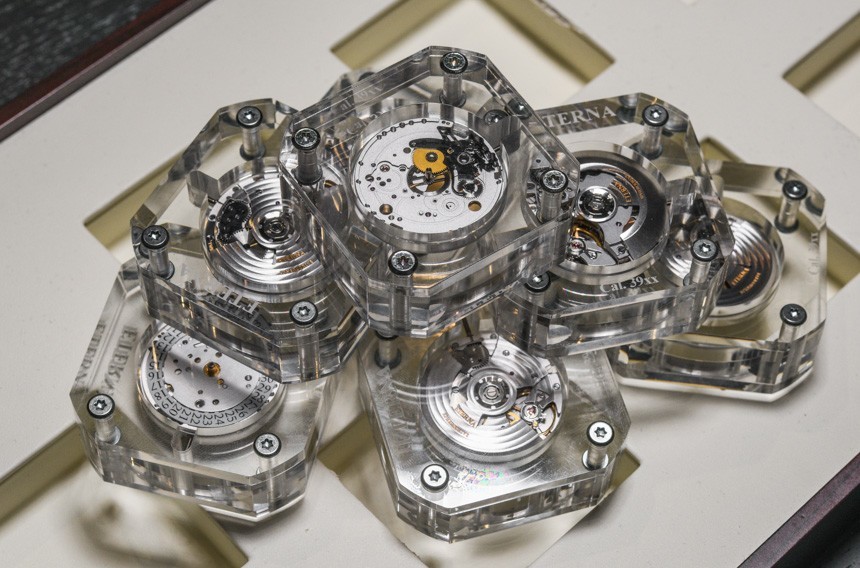
The Eterna Caliber 39 is one of the most interesting developments to come from the modern Swiss watch industry. Although we covered the news about the Eterna Caliber 39 here some two years ago, we had not heard too much about how much progress Eterna had made with developing the Caliber 39. By early 2015, that has at last changed, and we have seen all major iterations of the Eterna Caliber 39. It is thanks to this spectacular encounter that coming up now is the third episode in our unique Movement Hands-On Series. Get your popcorn and beverage nearby as we are about to learn a lot about what may very well be the most interesting and viable alternative to the famous array of ETA movements.
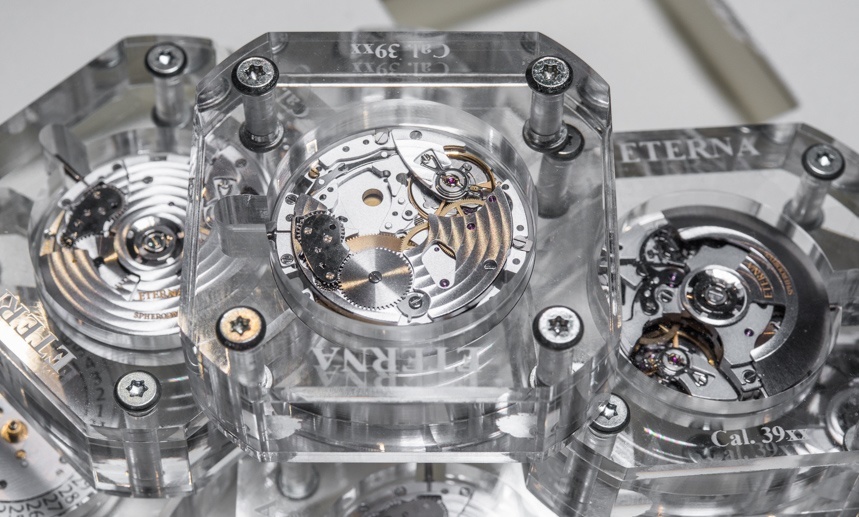
ETA cutting out the supplies of its semi-assembled movement kits entirely by 2011 and drastically and continuously reducing the amount of complete calibers it sells to third parties – read: non-Swatch Group – customers were some of the defining happenings for the 21st century watch industry. ETA had been the key supplier of movements to an incredibly high percentage of all Swiss watch brands – small or large, fashion or high-end – and with their cutting supplies starting at around 2007 (they intended to begin a couple of years sooner but were met with strong opposition from the Swiss competition agency), stopping movement kits entirely by 2011, and today, selling full movements far below demand, brands are forced to look for other sources for the engines of their watches.
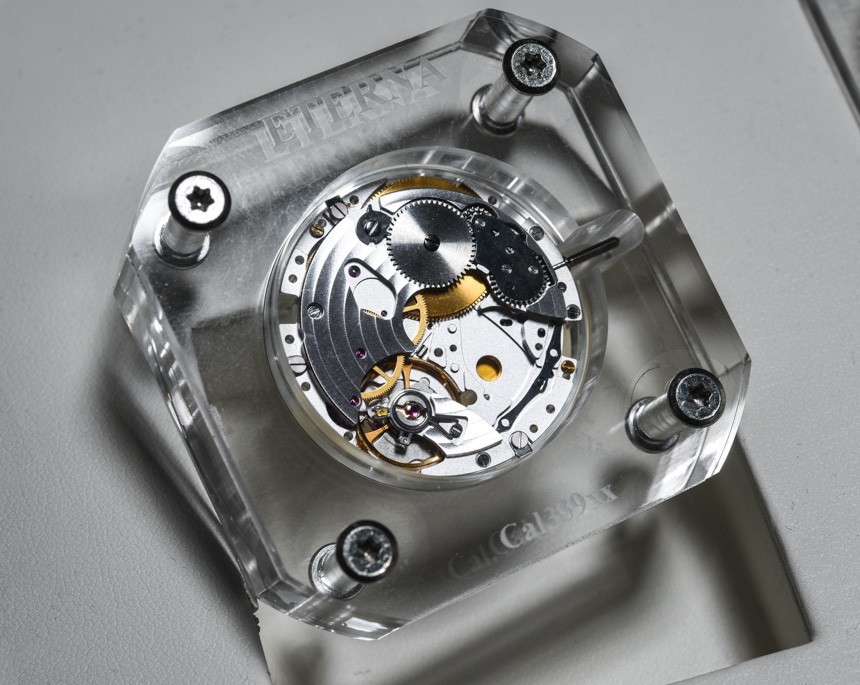
The ETA automatic 2824-2 with date, the hand-wound 6497, the automatic chronograph 7750 and 2894-2, as well as their numerous variations are just some from the vast selection of mechanical movements that are still highly preferred by brands to this date. These highly reliable, cheap-to-maintain and relatively easily customizable movements in many ways played a major role in the modern watch industry. Available in three different finishing qualities and even COSC certification, brands could easily find calibers that matched the price segments they were aiming for, while the famous “workhorse” reliability meant that they hardly had to worry about after sales nightmares – at least when it came to the movements, that is.
You can read a lot more about the reasons why and the exact ways how the Swatch Group and ETA have been reducing movement supplies in our unprecedented A Brief History Of ETA: THE Swiss Movement Maker article. In it, we of course also discuss the history of Eterna and ETA – including how the small workshop of Dr. Girard & Schild started out as a movement kit (ébauche) manufacturer in 1856 and was ultimately renamed to Eterna in 1905, and also how ETA, the movement manufacturing branch of Eterna, came to be in 1932.
We are living in very different times, and ETA and Eterna are, in fact, two very different companies today – the former is owned by the Swatch Group while the latter, since mid-2012, belongs to Citychamp Watch & Jewellery Group Limited (formerly known as “China Haidian Holdings Limited”). What Eterna’s watch collections have to offer is for another discussion, as we are here to dive deep into the intricacies of some of the most interesting watch movements out there – and so, without further ado, let’s look at the Eterna Caliber 39, why it is important, and why it is so technically interesting.
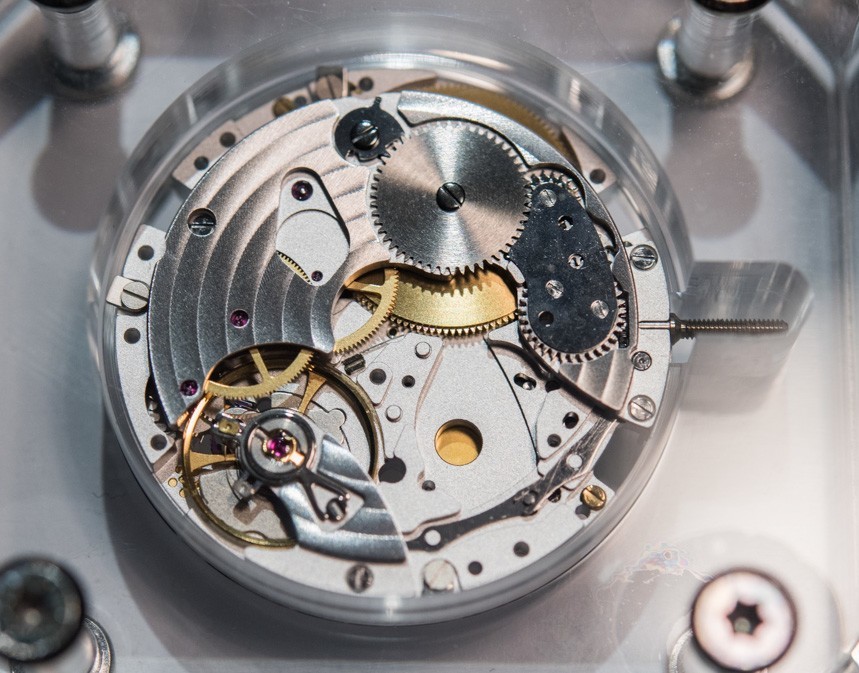
The large space in the lower right quarter of the movement accommodates the automatic winding module
As we mentioned above, one of the key advantages of ETA is the remarkable diversity of its movements, which allowed it to supply a large variety of brands – regardless whether they were going for greater affordability or more high-end execution and price-points – with calibers that fitted their requirements, both in terms of functionality and reliability. Eterna had to realize that if they were to offer a viable alternative, they must be able to cater to a similarly large variety of customers – who, in turn, will of course come with different expectations and ideas.
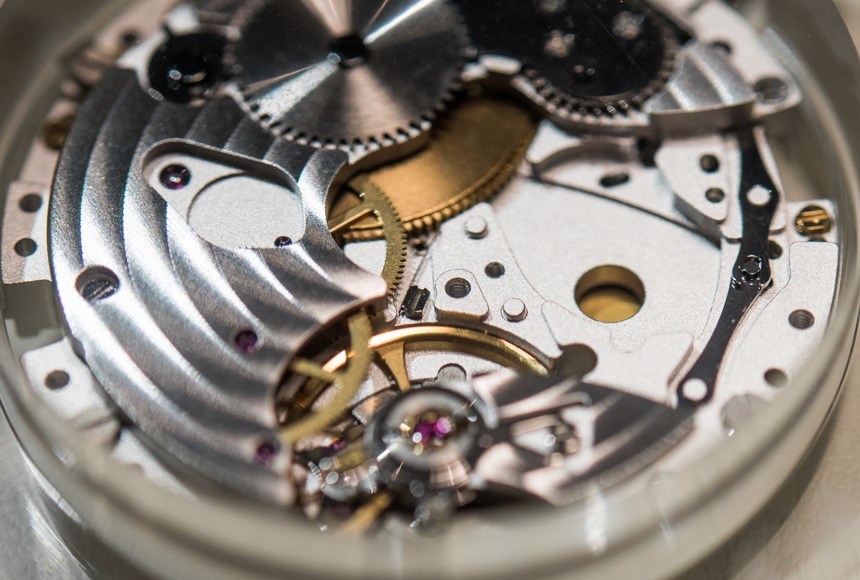
The hand-wound, already functional base caliber. Note the large space left out for the automatic winding module
The Eterna Caliber 39 was designed from the ground up to be easy to modify: the base movement that you see above carries all modifications. What you see there is the foundation to all Eterna Caliber 39xx (xx to be replaced with the respective number of the variation). The base movement as seen there functions without anything else being added to it: it will give you the central hours and minutes, seconds on a sub-dial, and feature hacking seconds as it is. The base Eterna Caliber 39 runs at 4 Hertz (28,800 vibrations per hour), is 30 millimeter wide and provides 68 hours or less of power reserve. When I say “68 hours or less,” that is because additional complications add drag and take a toll on power.
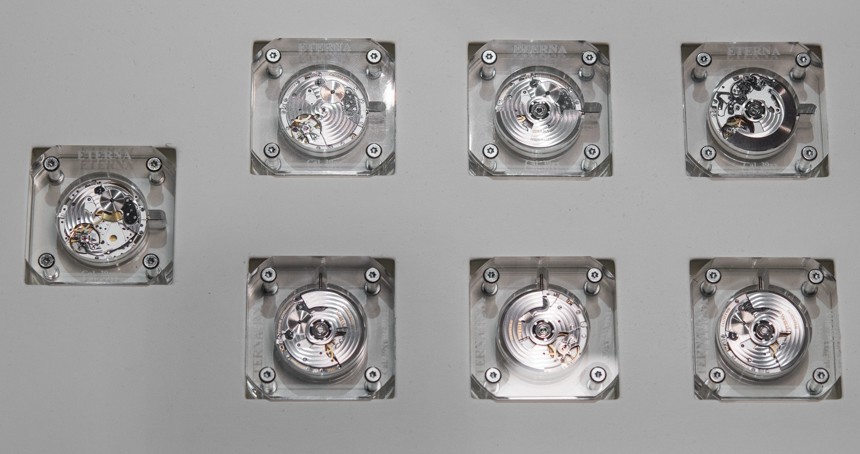
The first interesting bit here is that it will serve like the chassis of a car, to which extra bits and pieces are bolted – in this case, a large variety of complications, but more on those just a bit later. When it comes to many brands who developed their own new (or “new”) movements, their decision often times was to create something that was “integrated” – think of the Unico from Hublot or Breitling’s chronograph B01 for example – meaning that the base movement and chronograph functions are designed and constructed in a way that key components of each may be located in the other section. That sounds good and may result in a thinner movement, but it also makes it considerably more difficult to modify (and service) the movement, whereas a base movement with a module are easily separable – and hence, serviceable and modifiable.
As I said, the base Eterna Caliber 39 works as it is, no modifications are needed. Therefore, what you see above is the most basic version of all: the hand-wound iteration, with just a top plate with swirling stripes added for decoration and to cover up the excess space underneath.
An important thing to note is that no matter how the base caliber is modified, the mounting points remain the same, meaning that the brands need not redesign their cases (being designed to be thick enough for the different complications) when fitting a different movement: the hand-wound, the automatic, the chronograph, and all other versions are secured to the case at the same mounting points, which can be a major cost saver, given that a larger quantity of the same case can be manufactured, as opposed to different ones to house the variations of movements.
The second iteration adds automatic winding to the base, as the self-winding mechanism fits into that larger open space you saw a bit further above, between the crown mechanism (keyless works) and the balance wheel. Given how popular a regular automatic is going to be, it makes sense that this small complication pops into its designated space, making it easy and relatively cheap to install.
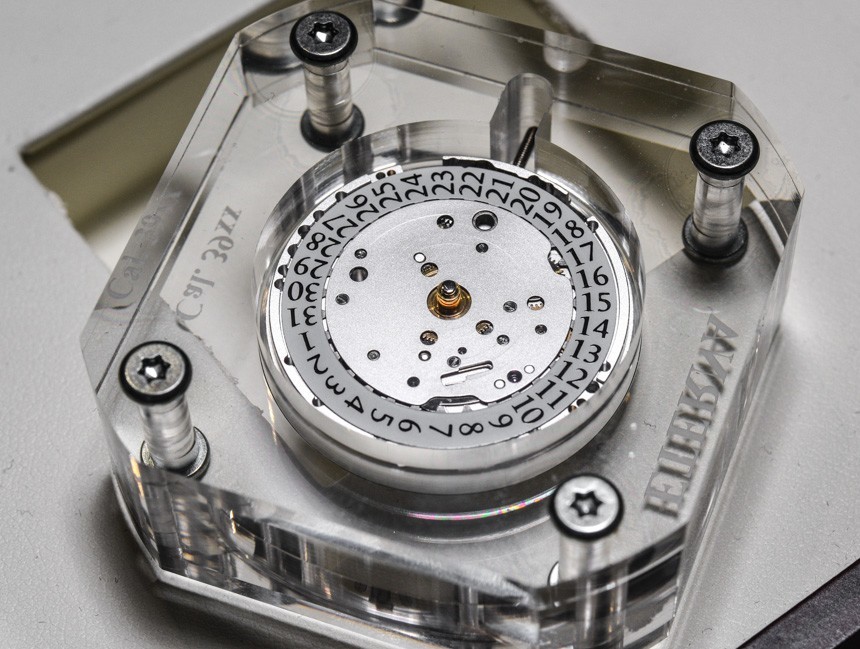
On the dial side, further complications can be easily mounted onto the base, these – to give a few examples – can be the date displayed on disc, the date displayed by a central hand, second timezone displayed on a sub-dial or by a central hand. All this has already provided us with a large number of options, allowing brands to easily create many models with small variations, meeting a larger variety of customer requirements.
Eterna Caliber 3903A is the basic automatic winding movement (with hours, minutes, seconds and hacking) with date, Eterna Caliber 3914A adds a GMT function to that list, while Eterna Caliber 3945A is the same as 3914A but with central seconds. The movement is 5.6 millimeters thick (5.9 with central seconds), which, considering the 65-hour power reserve, is acceptably thicker than the similar ETA 2824-2 that packs the same functions but is just 4.6 millimeters thick.
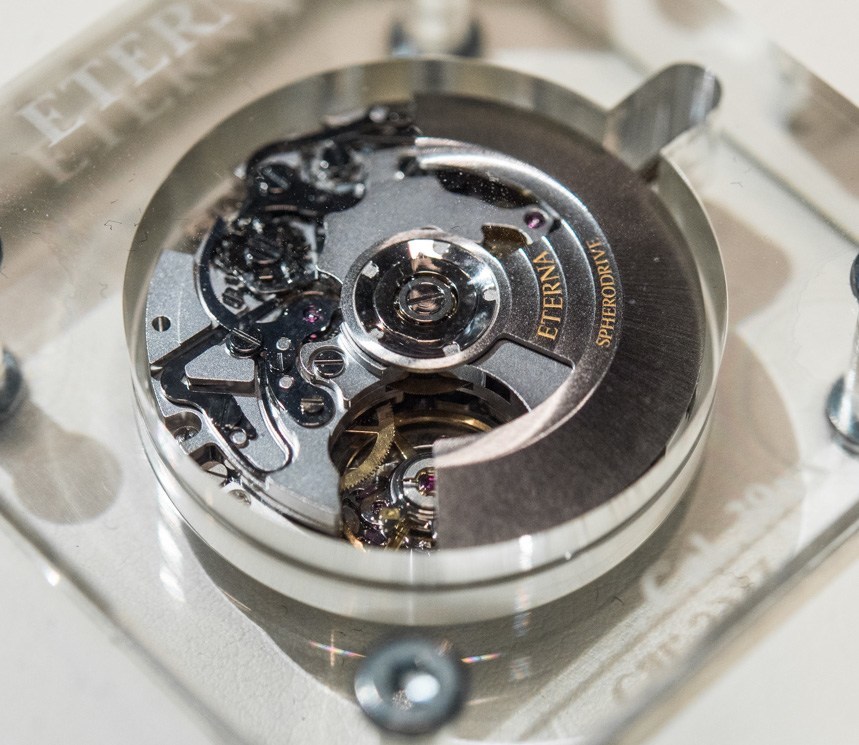
The fourth major version is the fly-back chronograph which, again, is a module fitted to the back of the base movement. Interestingly, the chronograph module itself costs about 20% more than the price of base movement, rendering the chronograph movement’s price over double that of the base. At 30 millimeters wide and 7.9 millimeters thick, the Eterna Caliber 3916A (with time, 12-hour fly-back chronograph, and date) and the Eterna Caliber 3927A (the same as the latter but with added GMT functionality) are both exactly the same size in diameter and thickness as the famed ETA 7750 and all its most important iterations.
It is very fascinating to see how Eterna’s engineers managed to create something modular that is to a tenth of a millimeter the exact same size as the 7750. The reason for that is, of course, simple: the Eterna Caliber 39 was purposefully designed to be an alternative to ETA’s movements, and the only way to offer an alternative to brands is by allowing them to keep their present case sizes and internal construction, saving them the enormous costs of re-engineering their cases. Despite the similarities, the Eterna Caliber 39 provides 60 hours of power reserve, half a day more than the 48-hour life of the 7750 movement family. That may just be enough if you put the watch down on Friday and only wear it again on Monday morning – a time frame all modern mechanical watches should cover, in my opinion.
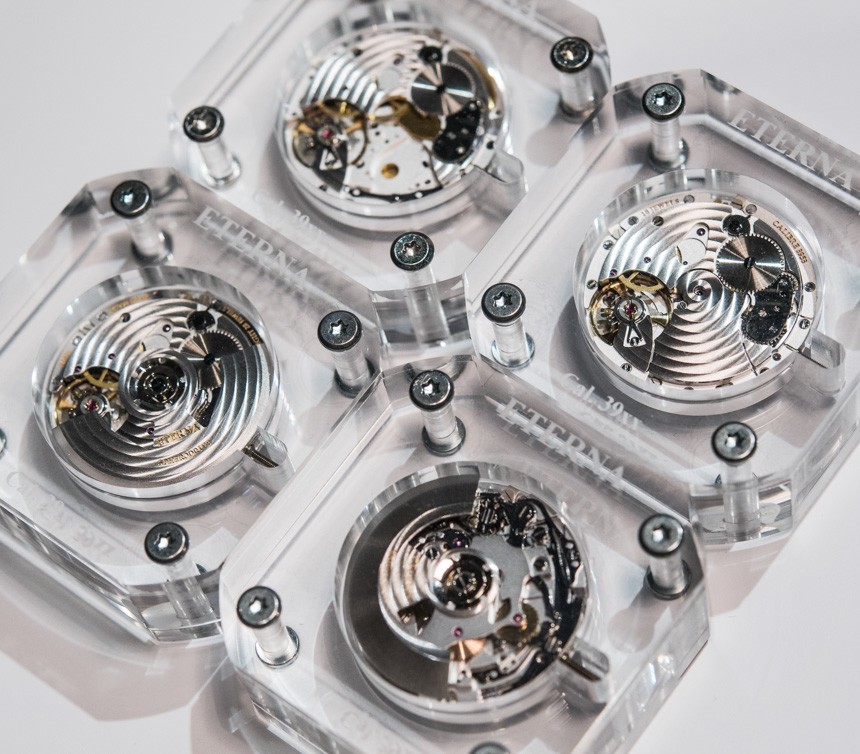
From a simple hand-wound movement through date and GMT equipped automatics, all the way to the fly-back chronograph, we have looked at what will certainly be some of the most popular variations of the Eterna Caliber 39. We were told that custom decorations will also be made available, including color coated movement components and custom rotors. The point here, really, is to offer a movement (well, with all variations, Eterna says 88 different ones altogether) that will meet the needs of a large range of watch brands.
Technically, the Eterna Caliber 39 is hugely impressive because – as you surely have heard from engineers before – it is incomparably more difficult to make something simple than complicated. The fact that such movement components can be replaced as a whole with such ease is an incredible achievement – something that many brands will surely appreciate.
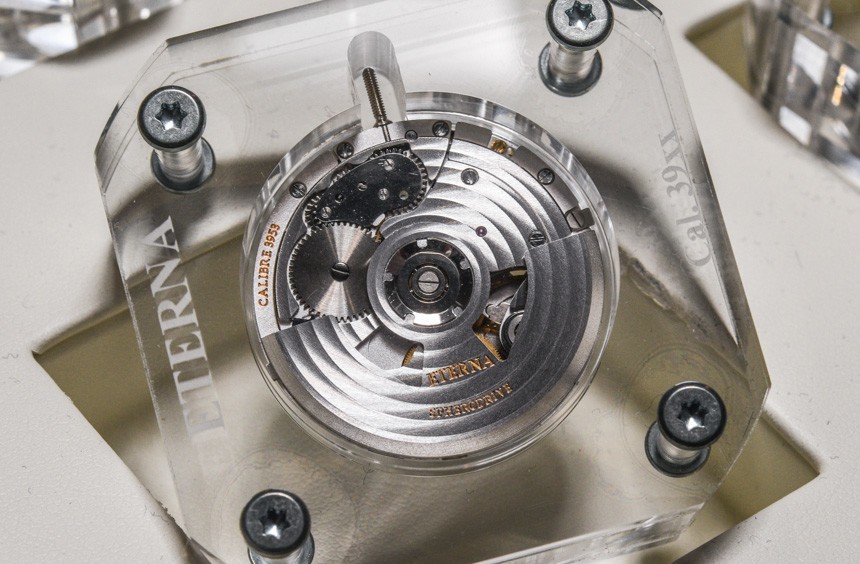
We will have to see how the Eterna Caliber 39 performs in the long run, both in terms of reliability and of course in overall success. Beyond what is expected to be a slight premium over other options (like Sellita movements) a bottleneck may be Eterna’s manufacturing capacity, as they started out by producing just 5,000 Eterna Caliber 39 units in 2013, with production being raised to about 20,000 per annum soon. That, of course, is nowhere near ETA figures – but I do hope to see the Eterna Caliber 39 (in one of its 88 variations) in more and more watches in the more affordable price segment. eterna-movement.com

